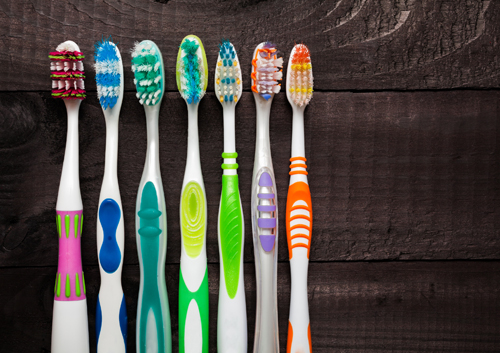What’s the Function of Functional Appliances?
April 25th, 2023

Whenever we bite down, we’re applying force with our jaw muscles. Functional appliances direct these forces to create healthier tooth and jaw alignment. They’re used to help correct bite problems and to encourage symmetrical jaw growth.
Functional appliances aren’t always necessary. Because every child’s teeth and bite are different, orthodontic treatment at our Westerville, OH office is carefully tailored to your child’s individual needs.
- For the child with minor tooth misalignment, traditional braces or aligners might be all that’s needed.
- For the child with a minor malocclusion, or bite problem, an orthodontist might use elastics (rubber bands) to bring teeth into healthy alignment.
- For the child who has a more serious malocclusion, involving both tooth and jaw alignment, an orthodontist might recommend a functional appliance.
A severe Class II malocclusion can be caused when the upper jaw or teeth are positioned too far forward, and/or the lower jaw is too small or positioned too far back. Common Class II malocclusions include:
- Open bite—the front teeth don’t touch when the back teeth bite down, or the back teeth don’t touch when the front teeth close.
- Overbite—some overbite is normal. A deep overbite occurs when the upper teeth significantly overlap the lower teeth.
- Overjet—the upper front teeth protrude further horizontally than they should.
Today’s functional appliances come in a variety of designs to treat Class II malocclusions. They can be fixed or removable. They can be used with or without braces. Some are designed to expand the upper palate to make sure there’s room for all the permanent teeth. What they all do is advance the position of the lower teeth and jaw to create a healthier, more comfortable bite.
Fixed devices are attached to the teeth and meant to be used full-time. These include the Forsus™ device, the Herbst® appliance, and the MARA appliance.
- Forsus Device
This appliance works with braces. A spring coil rod is most often attached to bands on the first molars on the upper jaw. It’s then connected to the arch wire on the lower jaw. Just like elastics—but more effective!—these spring coil rods provide gentle forward pressure that encourages the lower jaw and teeth forward.
- Herbst Appliance
The Herbst appliance also applies forward pressure to the lower jaw using telescoping rods connecting the upper and lower teeth. The rods expand as the mouth opens, and telescope together as it closes, positioning the lower jaw further forward while the upper jaw is held back. The Herbst can be worn alone or with braces, and can also be used to expand the upper palate.
- MARA Appliance
The MARA (Mandibular Anterior Repositioning Appliance) uses an adjustable “elbow” piece connecting bands on upper and lower molars to guide the lower jaw and teeth forward when the jaw closes.
Removable appliances such as Bionator and Twin Block appliances can also improve Class II malocclusions. They are meant to be worn for a specific number of hours each day, and can be taken out for sports or other activities as needed. Because it’s essential to get all the necessary hours in, removable appliances require commitment!
- Bionators
A bionator is made of wire and acrylic, and it looks a lot like a retainer. The wire fits around the upper front teeth. It’s attached to a smooth piece of acrylic that sits behind the upper teeth and is shaped to guide the lower jaw forward when biting down. The bionator can also be adjusted to expand the upper palate.
- Twin Block Appliance
The twin block appliance uses two separate pieces made of wire and smooth acrylic. Both pieces are modeled to fit precisely over the upper and lower arches. The acrylic “blocks” fit over the biting surfaces of the teeth, working together like a 3D puzzle. When your child bites down, the upper blocks slide into place behind the lower blocks, pushing the lower jaw and teeth forward. The top plate can also be adjusted to expand the upper palate if needed.
Because these appliances are best used while a child’s bones are still growing and developing, dentists and orthodontists recommend an orthodontic evaluation by age seven. Early treatment with a functional appliance can help correct serious bite problems before or together with braces. In some cases, functional appliances may reduce the need for headgear or surgery.
Todays’ orthodontic technology has made functional appliances more comfortable and efficient than ever before. Talk to Dr. David Ray to discover how an individualized treatment plan and a custom appliance can give your child a healthy bite and a lasting smile.
Your Sunny Smile
April 25th, 2023

Your beaming smile makes a sunny day even brighter—and that sunny day can return the favor! How does the sun affect your dental health? Let’s shine some light on the subject.
You may have heard how important calcium is to your body. Over 99% of the calcium in our bodies is used to form teeth and bones, providing strength and structure to the hardest parts of the body. But that’s not the only task on the calcium to-do list. Calcium is also necessary for:
- muscles to work
- nerves to carry messages
- blood to deliver nutrients and oxygen
- the release of hormones
When we don’t get enough calcium in our diets, our bodies start to draw the calcium they need for these critical functions from our teeth and bones. Over time, a severe calcium deficiency can lead to teeth that are brittle, or more vulnerable to decay, or loose due to weakened bone density in the jaw.
Keeping up with your calcium is especially important when you’re wearing braces or aligners. Calcium helps protect you from tooth decay and gum disease, which could delay your treatment. And you want your jaw bones strong and healthy as the bone tissue reforms and then stabilizes around your teeth as they move to their new, ideal positions.
We can get the calcium we need from a balanced diet. Dairy products are our most common source of calcium, and several servings of milk, cheese, or yogurt each day supply most of our needs. If dairy’s not on your menu, though, you can get calcium from other foods like broccoli, kale, collard greens, canned salmon, or sardines. Because calcium is so essential to our health, many foods are fortified with it, including fortified juices, bread, cereals—even tofu!
But there’s a snag here, and it’s a big one. We can’t really benefit from our careful consumption of calcium without the help of vitamin D. If calcium is the doorway to strong teeth and bones, vitamin D is the key which unlocks all of calcium’s benefits.
Without enough vitamin D, our bodies can’t absorb and make use of calcium. However, getting enough of this essential vitamin can be a problem. While we can get most of the vitamins we need from a balanced diet, there aren’t a lot of foods which are naturally rich in vitamin D.
So, how do we get this vital vitamin? The original option comes from nature.
- Sunlight
Vitamin D is called “the sunshine vitamin” because of the unique chemical reaction which creates it. When the ultraviolet B rays of the sun reach special cells in our skin, they convert cholesterol in these cells to a basic form of vitamin D. These vitamin molecules travel through the body, picking up hydrogen and oxygen molecules in the liver and kidneys to become active vitamin D.
Since sunlight exposure is easy, available, and free, it seems like a simple solution to getting the vitamin D we need.
But we’ve understandably moved away from the days of basking in the sun for hours at a time. Over-exposure to UV rays damages the skin, causing premature aging and, worse, a much greater risk of skin cancer. If you enjoy time in the sun, talk to your doctor about safe sun exposure, which can depend on the part of the country you live in, the time of year, and your individual skin type.
And, if you need to avoid sun exposure, there are other opportunities for getting the vitamin D you need.
- Diet
While there aren’t a lot of foods which are naturally rich in vitamin D, there are still a few options on the menu. Oily fish like salmon, tuna, and herring—and old-fashioned cod liver oil—are good sources of the vitamin. But most of us don’t live on a strict fish diet!
Instead, we can get the vitamin D we need from fortified foods. Vitamin D is commonly added to cow’s milk, soy milk, orange juice, and cereals to make sure the calcium in our diet is working effectively to keep our teeth and bones strong. Check out nutritional labels to discover whether your favorite grocery products contain vitamin D. And don’t forget to choose foods that are braces-friendly, as well!
- Supplements
For hundreds of years, people who lived in climates and cities without a lot of sunshine suffered from the effects of vitamin D deficiency. Diseases like rickets, where the teeth and bones don’t form properly, were common in children. Adults who couldn’t absorb enough calcium suffered from weak teeth and bones.
Today, depending on age, allergies to sun or food products, dietary choices, and health conditions, some people are still at risk for vitamin D deficiency. If you’ve been diagnosed with this deficiency, your doctor might recommend a vitamin D supplement. (It’s important to take any supplement as directed, because taking too much vitamin D can be harmful, too.)
So, which form of vitamin D is best? Fortified foods? Supplements? Or is it that radiant original source—the sun? No need to worry. With any form of vitamin D, you’re getting the key you need to unlock the benefits of the calcium in your diet—for healthy teeth and bones before, during, and after your treatment at our Westerville, OH orthodontic office. Your sunny smile will thank you!
Snowball Effect
April 5th, 2023

Winter and its snowball fights are behind us, true, but there might be another kind of snowball heading your way. When you neglect the small steps involved in your everyday orthodontic routines, little problems can start to snowball into bigger ones, affecting your dental health and delaying your orthodontic progress.
Here are three areas where letting the small steps in your routine slide can have consequences:
Dental Hygiene
It can be harder to get your teeth their cleanest while you’re wearing braces. After all, there are wires to get behind and brackets to brush around, and you still need to get that floss in between your teeth. But neglecting your dental hygiene can have big consequences:
- Demineralization
The bacteria in plaque create acids that strip the minerals from tooth enamel. This process is called demineralization. Wherever plaque is allowed to build up, you’ll start to see white spots in the enamel. This discoloration is a sign that minerals are missing, and is often found around brackets, where it’s harder to brush. White spots can be treated cosmetically, but better to avoid them as much as possible, because eventually they can become . . .
- Cavities
As demineralization continues, the enamel becomes weaker and weaker, until a hole forms in the tooth—a cavity. Besides damaging your tooth, a cavity can put you behind your orthodontic schedule if you need parts of your braces removed for treatment.
- Gum Disease
When plaque builds up around the gums, gum tissue becomes inflamed and irritated—this is gingivitis, or early-stage gum disease. Symptoms often include puffy gums, redness, bleeding, and bad breath. Mild gum disease becomes more serious over time, so treat gingivitis early—or, even better, prevent gum disease with careful brushing and flossing.
Looking After Your Appliances
- Follow Care Instructions
Orthodontic appliances need love, too! Any instructions you get for their care are for a good reason. Brackets can become loose when you bite down on chewy foods. Wires can break when you eat hard candy. Aligners can warp if you leave them on a hot dashboard. If you follow instructions carefully, you won’t need to postpone your progress while you wait for repairs.
- Use Your Protective Case
If you wear aligners, or a removable appliance, or a retainer, don’t forget to protect these items when you’re not wearing them. This means placing them in their cases, not wrapped in a napkin on your lunch tray, or in the bottom of your gym bag, or anywhere your dog can reach them!
- Be Proactive If Accidents Happen
Unfortunately, accidents do happen, and loose brackets, broken wires, lost ligatures, and cracked or warped aligners can interrupt orthodontic progress and cause you pain and discomfort. Give our Westerville, OH orthodontic office a call to see if minor damage to an appliance can be handled at home, or whether you should be seen before your next regular appointment for repairs.
Following Your Orthodontic Plan
There’s more to following your orthodontic schedule than arriving on time for appointments. Depending on your treatment, you might be responsible for keeping track of the time you spend wearing:
- Elastics
Elastic bands can be used to help align your upper and lower jaws. If you don’t wear your bands as directed, you won’t make progress as quickly as you could. And remember to replace your elastics as often as recommended, because after hours of s-t-r-e-t-c-h-i-n-g they lose their effectiveness.
- Aligners
Most aligners are worn for around 22 hours each day. If you don’t follow your orthodontist’s instructions and wear your aligners for the recommend hours each day, your teeth won’t be in the proper alignment when your next set of trays is ready to begin work.
- Retainers
If you have a retainer and don’t wear it, your teeth will start to shift position. Skip wearing your retainer long enough, and you might need a return to your braces or aligners to repair any new misalignment.
Don’t ignore what seem like little dental and orthodontic responsibilities. Keep up with daily cleaning and brushing, take care of your appliances, and follow your orthodontic plan, and you’ll finish your treatment with a beautiful and healthy smile—right on schedule.
My toothbrush did what?
March 29th, 2023

If you were to put your toothbrush bristles under a high-powered microscope, what you would see might give you nightmares: millions of bacteria, busily crawling up and down your toothbrush bristles, consuming proteins that came from your mouth, and still clinging to the bristles even after you’ve rinsed them with water.
Rinsing your toothbrush after brushing removes some of those ferociously hungry bacteria, but not all. The American Dental Association says that bacterial infestations develop on toothbrushes within a month of daily use. The ADA also states that unless a toothbrush is sterilized before being packaged, it’s going to come with bacteria – free of charge!
Germs and Frayed Bristles: the Demise of a Toothbrush
Dr. David Ray and our staff recommend that you toss your old toothbrush in the trash and purchase a new one every three months. Children tend to bite on their toothbrushes, which makes the bristles degrade and fray faster. Chances are kids may need to have their toothbrushes changed more frequently.
Where do they hide?
Bacteria are tenacious little germs that head for those concealed areas between toothbrush bristles. They are highly adaptable and exist in every type of extreme environment. Some people actually go so far as to put their toothbrush in a microwave for a few seconds to kill germs, but this doesn't always work either. In fact, you may only end up with a toothbrush that’s as bendable as a Gumby doll – and still covered with germs.
Feed a Cold, Starve a Fever, and Get Rid of Your Toothbrush
When you have a head cold, your mouth is teeming with bacteria gleefully roaming around, and gobbling mucus and dead skin cells. If you brush your teeth while suffering a sinus condition, the brush will act like a magnet for ravenous bacteria. Use your old toothbrush while you are sick, but as soon as you feel better, throw it away and get a new one. Otherwise you could possibly re-infect yourself with the same cold germs!






